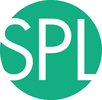Difference between revisions of "Documentation/Nightly/Extensions/TrackerStabilizer"
| Line 41: | Line 41: | ||
<!-- ---------------------------- --> | <!-- ---------------------------- --> | ||
{{documentation/{{documentation/version}}/module-section|Panels and their use}} | {{documentation/{{documentation/version}}/module-section|Panels and their use}} | ||
| − | + | {| | |
| + | The GUI of the {{documentation/modulename}} module contains 4 elements: | ||
| + | * Input Transform. This is the raw data, usually raw tracker data, represented by a vtkMRMLLinearTransformNode | ||
| + | * Output Transform. This is the filtered transform represented also by a vtkMRMLLinearTransformNode. This node can be created directly from the list | ||
| + | * Filter checkbox. This checkbox turn on/off the filtering | ||
| + | * Smoothing slider. This slider control the smoothing parameter. In the left, really smooth, with quiet important delay. In the right, faster (almost no delay), but noisier. | ||
| + | |} | ||
| + | {| | ||
| + | |[[Image:TrackerStabilizer_GUI.png|thumb|400px|{{documentation/modulename}} GUI ]] | ||
| + | |} | ||
| + | |||
<!-- | <!-- | ||
{{documentation/{{documentation/version}}/module-parametersdescription}} | {{documentation/{{documentation/version}}/module-parametersdescription}} | ||
| Line 57: | Line 67: | ||
{{documentation/{{documentation/version}}/module-section|Information for Developers}} | {{documentation/{{documentation/version}}/module-section|Information for Developers}} | ||
{{documentation/{{documentation/version}}/module-developerinfo}} | {{documentation/{{documentation/version}}/module-developerinfo}} | ||
| + | This module is for now only a low-pass filter, but in the futur, several filters would be implemented to let the user choose. | ||
Revision as of 17:12, 5 February 2013
Home < Documentation < Nightly < Extensions < TrackerStabilizerIntroduction and Acknowledgements
|
This work is supported by NA-MIC, NCIGT, and the Slicer Community. This work is supported by P01-CA67165 "Image Guided Therapy" (PI: Ferenc Joelsz) | |||||||
|
Module Description
TrackerStabilizer module allows to output a filtered transform node based on an tracker input (transform node). Tracking sensors are really usefull to track surgical tools, robots, patient motion, etc... . However, the data imported in 3D Slicer from these devices are often noisy. In order to reduce this noise and being able to smoothly control some object, such as 3D Slicer camera, the TrackerStabilizer module will apply a low-pass filter on input data. The cut-off frequency (i.e. the smoothing parameter) is adjustable by the user. It is important to notice that filters induce delay, and the smoother the motion is, the bigger the delay between the raw data and the filtered position will be.
Use Cases
The TrackerStabilizer module could be used in any situation requiring stable tracking data and not requiring a "real-time" information. Indeed, applying a filter on raw data will induce a delay (depending on choosen parameters) on the filtered position/orientation. An example could be to drive Slicer's virtual camera. Having some noise on the transformation driving the camera will cause the camera to "shake" which could be really distracting and make it difficult to see what is happening in the scene. By filtering this raw data, we could smooth the camera motion.
Tutorials
N/A
Panels and their use
The GUI of the TrackerStabilizer module contains 4 elements:- Input Transform. This is the raw data, usually raw tracker data, represented by a vtkMRMLLinearTransformNode
- Output Transform. This is the filtered transform represented also by a vtkMRMLLinearTransformNode. This node can be created directly from the list
- Filter checkbox. This checkbox turn on/off the filtering
- Smoothing slider. This slider control the smoothing parameter. In the left, really smooth, with quiet important delay. In the right, faster (almost no delay), but noisier.
Similar Modules
N/A
References
N/A
Information for Developers
| Section under construction. |
This module is for now only a low-pass filter, but in the futur, several filters would be implemented to let the user choose.


